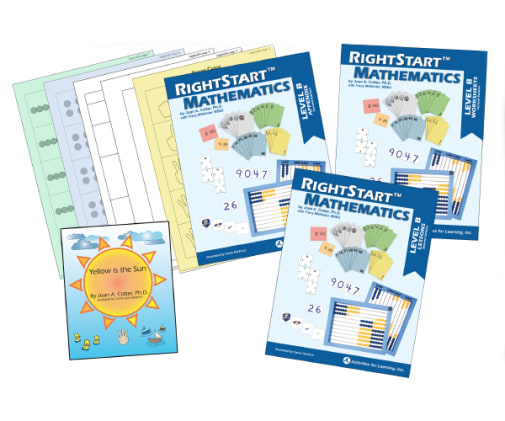RightStart Mathematics Level B Book Bundle 2nd Edition
Description
The RS2 Level B Lessons continue to build a strong foundation with number sense through quantity recognition and mental strategies by grouping in 5s and 10s using the AL Abacus. RS2 Level B includes addition and subtraction facts to 18, place value to the thousands, geometry, measurement, time, money, and basic fractions. 4-digit addition and 2-digit mental addition is also incorporated. Problem solving and place value are emphasized throughout. Card games are included in the lessons. Review lessons are included for children new to the RightStart™ program.
RS2 Level B Book Bundle includes the Lessons, Worksheets, Yellow is the Sun book, and the Level B Appendix Pages
You will also need one RS2 Math Set per family.
If you are teaching this level to more than one child, you will need these duplicate items:
- RS2 Level B Worksheets
- AL Abacus Standard
- Place Value Cards
- Geared Clock
| Product Format: | Other |
|---|---|
| Grade: | 1 |
| Brand: | Activities for Learning |
| Length in Inches: | 11 |
| Width in Inches: | 9 |
| Height in Inches: | 3 |
| Weight in Pounds: | 3.453 |

